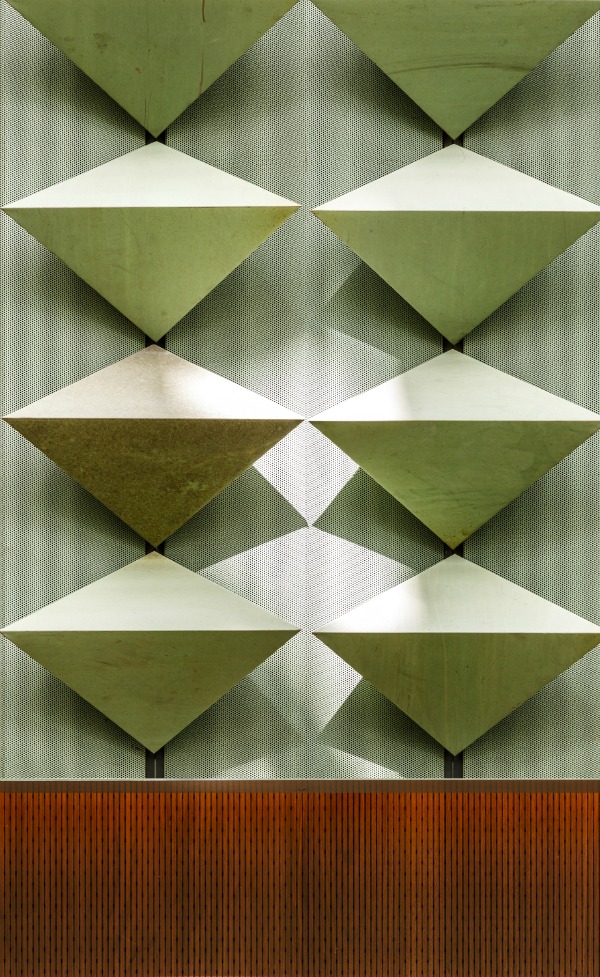By Frank Harmon, FAIA
I recently attended my daughter Laura’s graduation at Harvard University, where more than 7,200 fellow students received their diplomas and honors in a daylong ceremony attended by family and friends.
Like many commencement ceremonies, there were speeches, recognitions, honorary degrees, and closing remarks. Graduates received advice about life, the world, jobs, work, and career during the three-hour commencement, and much of what was said will be forgotten. But the ceremony was held outdoors in Harvard Yard, and that will be unforgettable.
Laura’s previous graduation ceremonies were all held indoors. Her high school graduation took place at the convention center in Raleigh, North Carolina. Her college commencement was held at Philharmonic Hall in Lincoln Center in New York City. And the university where I teach holds commencement in a 19,000-seat indoor sports facility
By contrast, Harvard’s commencement was held in the very same college yard that the graduates have walked through so many times.
How can this familiar yard, its name even suggesting the everyday, fulfill our need for the pomp and circumstance befitting a great university?
On graduation day, my wife and I entered Harvard Yard at eight in the morning to take our seats in white lawn chairs laid out on the grass, along with about 15,000 other parents, alumni, and friends. The day was sunny and warm with no sign of rain (although the tradition is to hold the ceremony outside regardless of the weather). At about nine o’clock, the graduates began to arrive, marching in rows from many directions to take their seats with us in the yard. Crimson banners dotted the lawn, a breeze flowed through the trees, and the sound of the Harvard band echoed off the academic buildings that surround the yard. Many of the alumni wore top hats, which, combined with the faculty’s crimson robes, lent a theatrical air to the occasion. At 9:45 the commencement ceremony began. As the ceremony continued through the morning, shadows changed, the leaves on the trees cast a pattern on the graduates, and we moved our chairs to escape the sunlight.
At times when the ceremony verged on tedious, my daughter sent me irreverent text messages. I noticed my wife reading the New Yorker. There was no coffee available, so I found myself daydreaming…
…Of Henry David Thoreau, also a Harvard graduate, walking under the same trees that shaded us.
…Of the crimson banners leading this cohort like a Roman legion into the future (part of the commencement was in Latin).
…Of the wind that rustled the trees coming to us from the Gulf of Mexico and continuing out over the North Atlantic to places as distant as those from which these scholars had come from and to which they would soon disperse in their individual journeys.
At noon, the band began to play; the graduates threw their mortarboard hats into the air then rose to march away.
Despite the occasional tedium and the hours spent sitting in a skimpy lawn chair, the experience was unforgettable.
Why is that? Was it memorable because it happened in plain daylight? We have become so accustomed to theatrical lighting that we forget the power of daylight and how democratic it is. Theatrical lighting obscures the audience. In daylight, speaker and audience are one.
Or was it memorable because it was held beneath spreading trees? The word “academy” comes from the akademeia, located just outside ancient Athens, where Plato made the gymnasium famous as a center of learning. The sacred space, dedicated to Athena, the Greek goddess of wisdom, had formerly been an olive grove, hence the expression “the groves of academe.”
Here, in a grove of New England maple trees, we watched an odyssey begin. It all seemed so natural: Whoever heard of having a revelation indoors?
Another everyday outdoor space that is witness to the extraordinary can be seen in London, where, each year on November 11, the British nation observes Remembrance Day for the over 1.5 million British subjects who lost their lives in the two World Wars. They hold the solemn ceremony not in Westminster abbey, nor in the mighty St Paul’s Cathedral, but in the middle of a street. The event is disarmingly simple. The Queen, Prime Minister, and other dignitaries lay a wreath at The Cenotaph, an empty tomb located in the middle of Whitehall, a street near the Houses of Parliament. When Big Ben strikes 11 a.m. a two-minute silence follows. For the rest of the year, cars, taxis and lorries rush past the stone Cenotaph. But on this day the street is closed. Thus, one of the busiest thoroughfares in London, closed down for Remembrance Day, becomes a symbol of a nation’s gratitude — a pause to remember. Far from being trivialized by its location, the ceremony is made poignant by its connection to the mundane life of the street.
As the graduates filed out of Harvard Yard after commencement, one could sense both anticipation and apprehension as they left academia for an uncertain economy and a brave new world of technology and planetary challenges. How appropriate, then, to experience a simple outdoor ceremony that would have been recognizable to Thoreau and even John Harvard. It seems as though Harvard Yard was designed in some unconscious way to be the only appropriate space on campus for graduation.
For more on Frank Harmon, go to http://www.frankharmon.com/


